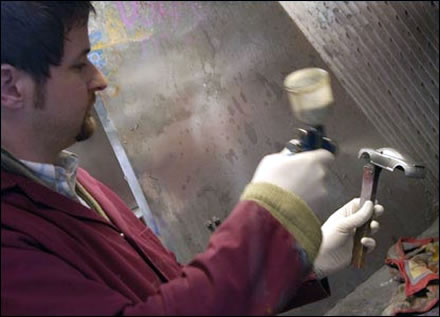
Lesson 10: Circumference of a Circle

Teacher Lesson Plan
Students will follow a path of a given length rolling different circular shapes (hula hoops). They will measure the length of the path and count the number of rotations the hula hoop makes on the path. By dividing those numbers, they will approximate the circumference of the hula hoop. The more accurate their measurements, the more accurate the circumference value will be.
- Set out a course for each group to use. Our first course was the length of 4 meters, the second 5, the third 5, etc. You may set the course for the length of your choice. All of the courses may be the same length. Just be sure the length is greater than the circumference of your largest object.
- Provide students with 3 different size hula hoops, three pieces of masking tape to mark a point on each of the hula hoops to use as the starting point for the rotation and a calculator.
- When they have they complete their measurements and calculations, give them a string to measure the actual circumference. Students will take the string along the OUTSIDE of the hula hoop, mark the circumference on the string and then lay the string out flat and measure it to determine actual circumference.
Assessment/evaluation piece: Students will present findings on various hoop sizes - - - cumulative data presentation.
Student Worksheets
Name __________________________ Hula Hoop activity #2
This activity will compare difference methods of measuring circumference of hula hoops of different sizes.
Procedures:
- A path has been set up for you. You will use the same path for each step of this lab. Measure the distance of the path in meters.
- Using the masking tape, mark a location on the hoop that will be the starting point. Place that point on the starting point of the path. Roll the hoop the distance of the path counting the number of complete rotations. On the last rotation determine what fraction or decimal of a rotation the hoop has traveled. (The more precise you are with this step, the more precise your final calculation will be). Record the mixed number or decimal of the total number of rotations of the hula hoop for the whole path.
- Calculate the circumference of the hula hoop by dividing the length of the path by the number of rotations of the hula hoop. Record your results on the chart.
- Go to your teacher and get a string. To assess the accuracy of your measurement and calculations, take the string, wrap it around the circumference of the hoop and mark the string. Put the string in a straight line and use the meter stick to measure the circumference. The closer this measurement is to the calculated circumference, the more accurate your measurements.
- Repeat steps 1 – 4 for each hula hoop.
|
Hula hoop |
Distance Of path |
Number of rotations |
Calculate the circumference by dividing the path distance by the # of rotations |
Measurement of string |
|
1 |
||||
|
2 |
||||
|
3 |
Answer the following questions:
A) Calculate the percent of error for each trial. Use the formula:
Calculated circumference – string measurement string measurement
Show work and results for each trial.
Trial 1:
Trial 2:
Trial 3:
B) On which trial were your results most accurate? What did you do differently on this trial?
Name ____________________________________ Quiz -determining circumferences
1) Carol calculated a circumference of 30.5 cm. When she measured the circle, the measurement was 31.4 cm. What is the percentage of error using the following formula?
Percent of error = Calculated circumference – string measurement string measurement
Show all of your work for your calculation of percent of error.
2) List two things your group did or could have done when working on this graph to get the most accurate answer (or the lowest percent of error).
National Science Standards
- All students should develop abilities necessary to do scientific inquiry and understandings about scientific inquiry.
Standard Course of Study Objectives
- 2.01 Determine the effect on perimeter, area or volume when one or more dimensions of two- and three-dimensional figures are changed.
- 2.02 Apply and use concepts of indirect measurement.
- Masking tape to set out a course for each of the groups
- Tape measure
- 5 sets of 3 circular items with different radii (hula hoops)
- A piece of string for each group longer than the circumference of the largest hula hoop. Do not give the string to the group until they have completed their measurements and calculations.

